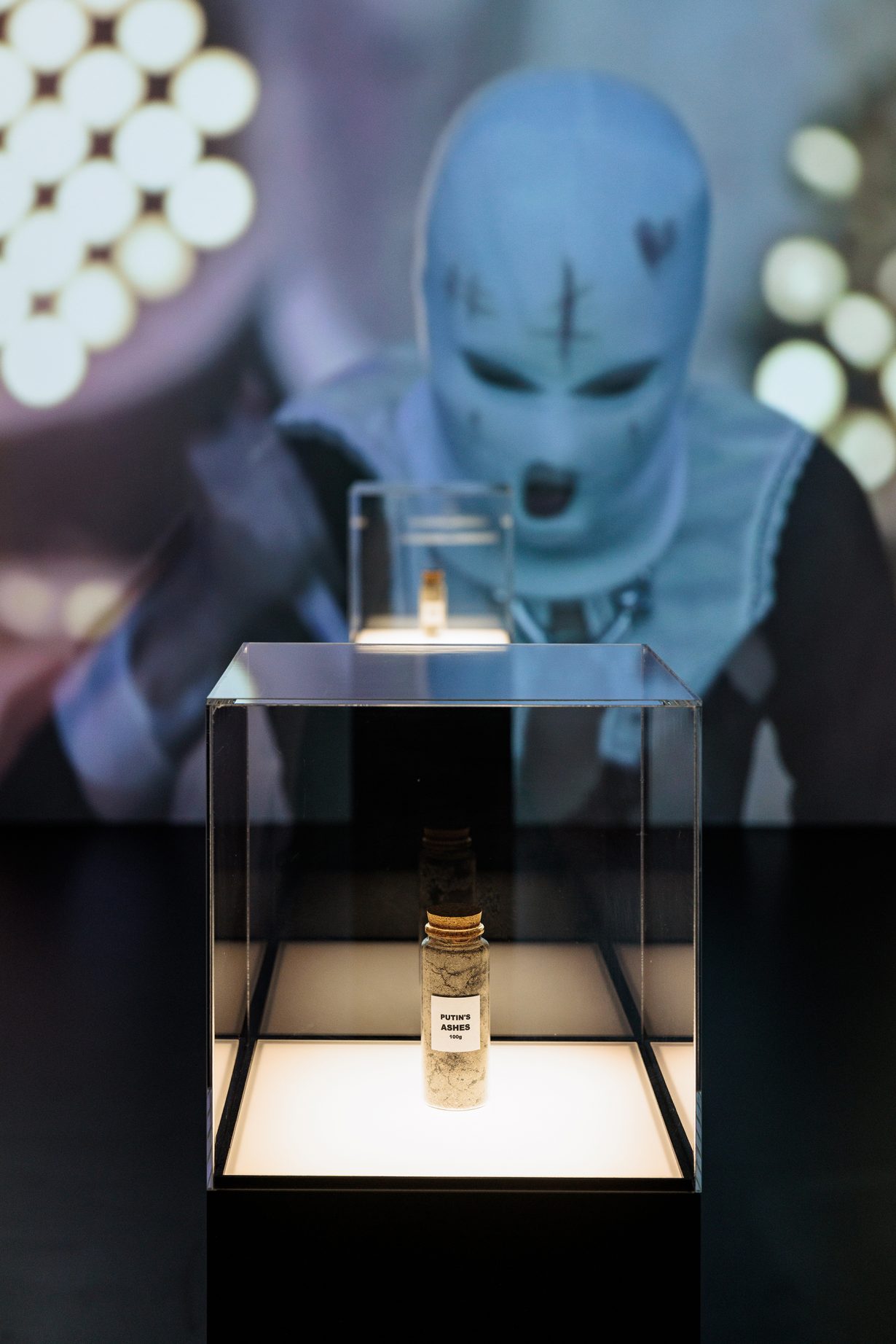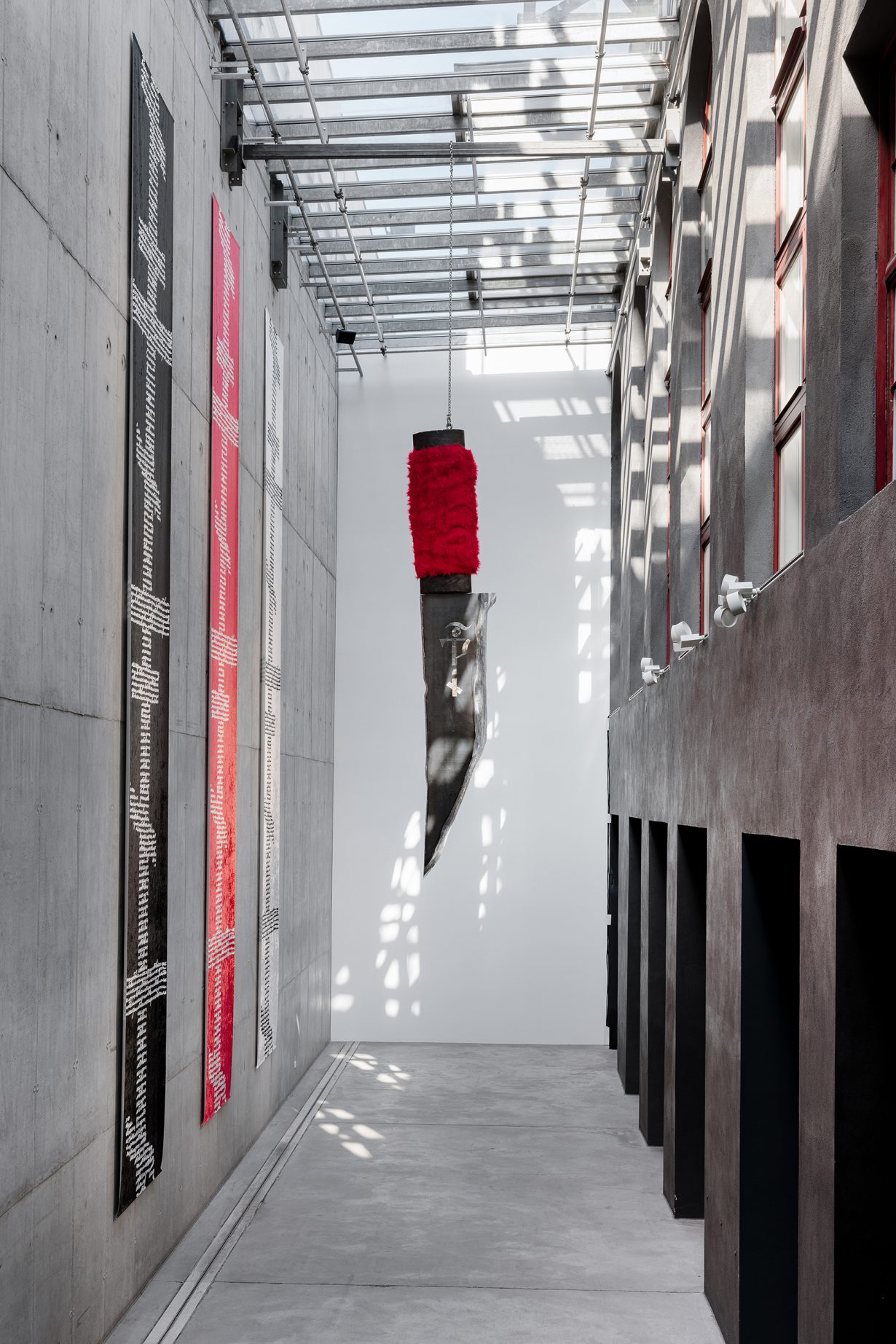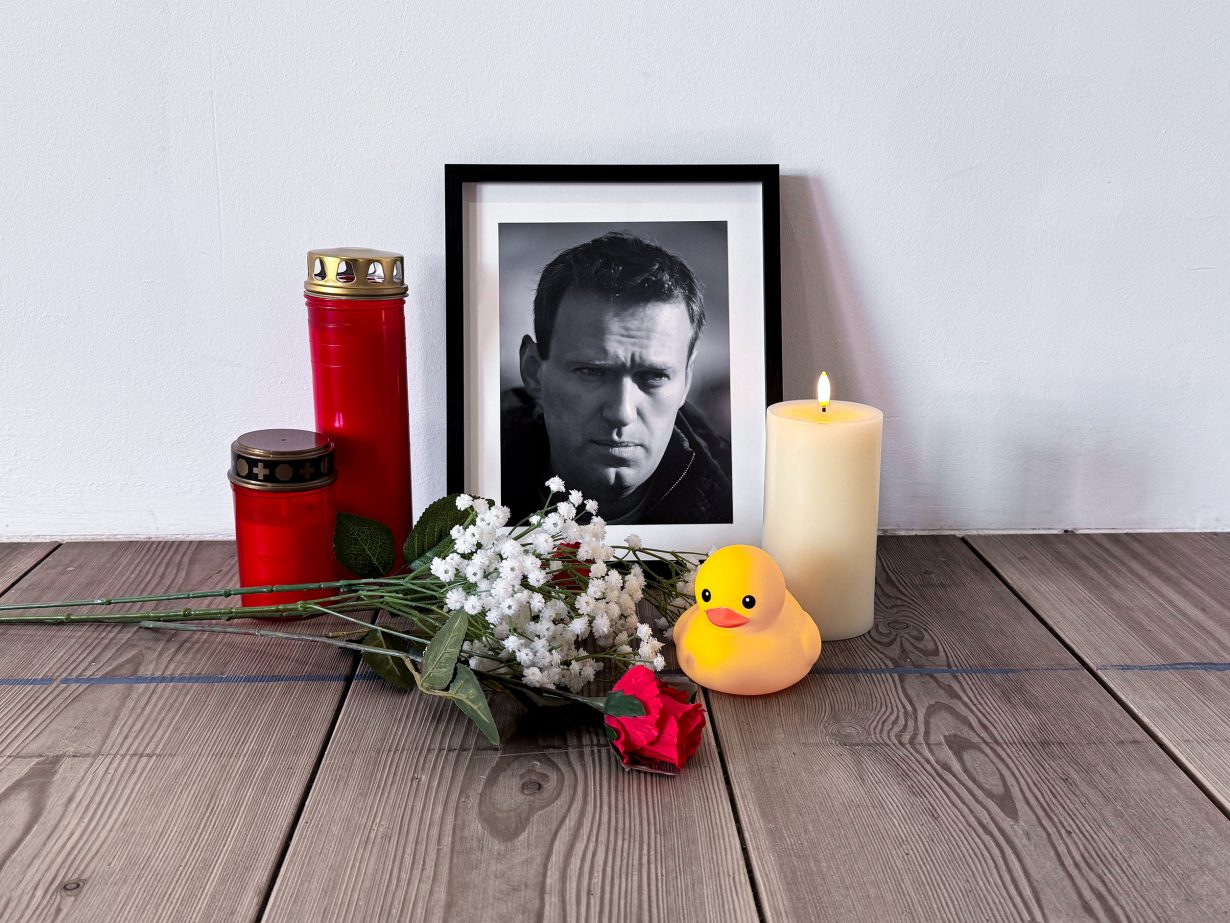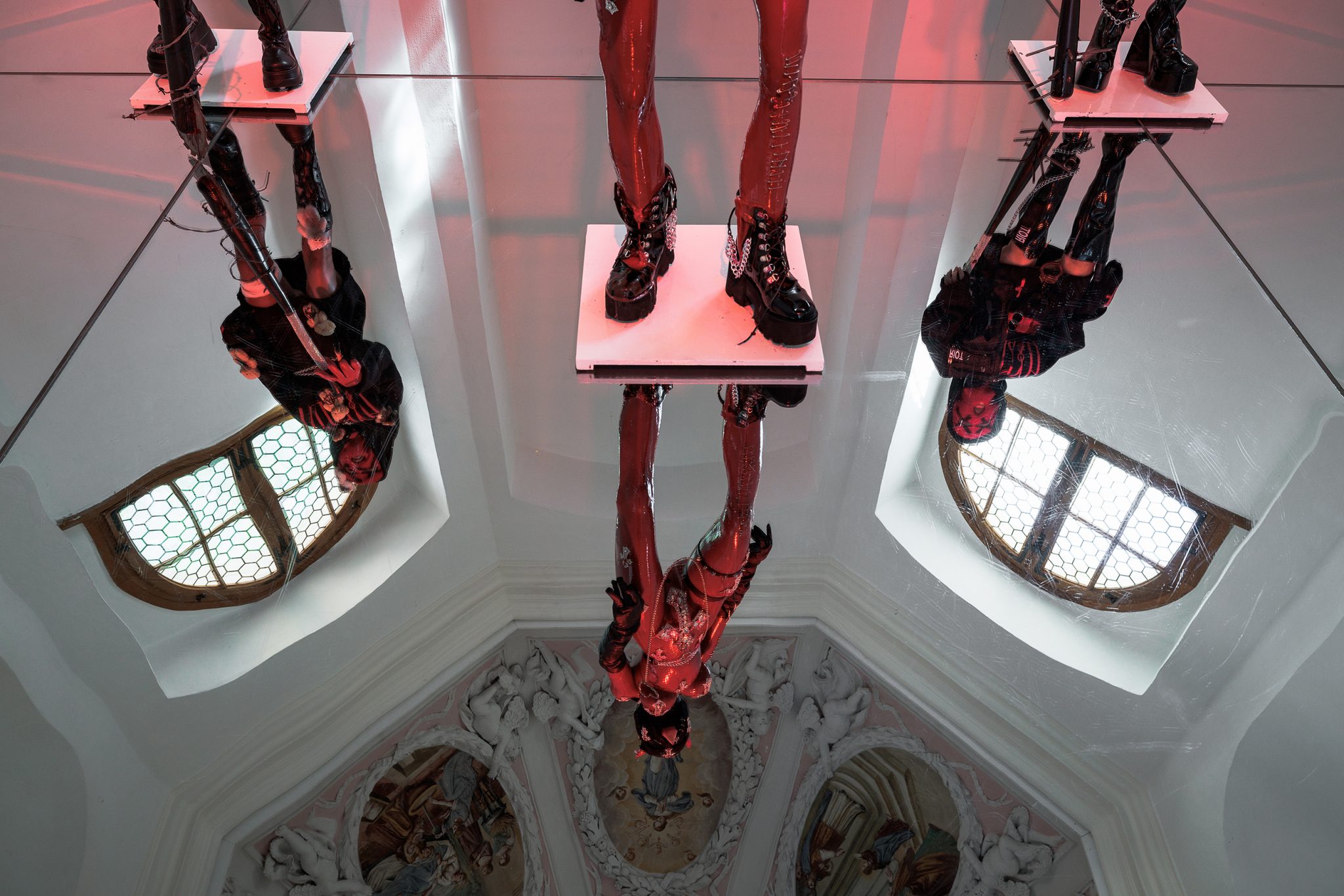“If the revolution is just changing from one patriarchy to another, then what’s the difference for us?”
The day I log in to Zoom to speak with Nadya Tolokonnikova, the artist and cofounder of the feminist protest group Pussy Riot, is what would have been the forty-eighth birthday of Alexei Navalny, the Russian opposition leader who died in February in a remote Arctic penal colony (and whose wife Yulia Navalnaya now faces a warrant from the Russian Government for her arrest). The two were close friends.
Tolokonnikova has spent time in prison for her art, has endured hunger strikes and beatings, and yet is continuing to speak out – though the cost of protesting the regime has grown higher still. My first encounter with Pussy Riot came from watching online videos of their 2012 Punk Prayer performance at Moscow’s Cathedral of Christ the Saviour. Clad in balaclavas, the group scream anti-Putin lyrics while kicking and punching the air to a roaring guitar line, before Tolokonnikova and other members of the group were arrested and jailed.
I ask the artist where she is in the world. She gently reminds me that she has, necessarily, been “geo-anonymous” for some time. Indeed, I realise how rare it is that I meet someone who has gone to such lengths for their art; the knowledge that Tolokonnikova is living in exile and is on Russia’s ‘most-wanted’ list of criminals – and, at the age of thirty-four, barely older than me – is, frankly, as intimidating as it is awe-inspiring.
Over the course of our conversation, Tolokonnikova takes me through her upcoming exhibition, Rage, at Austria’s OK Linz, aided by photos, video stills and exhibition floorplans. There’s a room titled ‘Putin’s Mausoleum’, dubbed by curator Michaela Seiser as ‘a tomb for Putin’s power’; a series of 100 prison knives made from junk metal the artist found in an abandoned prison, evoking the precarity faced by activists and artists in Russia; a reconstruction of Tolokonnikova’s own prison cell; and a ‘chapel’ inhabited by ‘used’ sex dolls. In light of Tolokonnikova’s first museum show, we discuss feminism, her obsession with Russian religious philosophy and the relationship between healing and rage.

ArtReview Rage is your first museum show – why now?
Nadia Tolokonnikova We were part of some museum exhibits before, a lot of them during our prison time. But it’s a great honour to me, and it’s very humbling that I get to put together the entire show at an institution.
Why now? Today, as we speak, is the birthday of my friend Alexei Navalny. He was murdered on 16 February this year in an Arctic penal colony. A number of works are dedicated to his memory, which I created quickly after the news of his death.
I think it’s important to create this sense of community and belonging for people who disagree with Putin’s actions, who protest against his terrible and criminal war in Ukraine, his expansionist imperialist ambitions. We exist, even though we’re not really seen that often. It’s very difficult but important for us to make ourselves seen.
AR Would you say that this first museum show is the beginning of a new chapter for you?
NT It’s a development, it’s one of the chapters, but I would never be able to confine myself just to museum shows. I think it’s important because we need all the help we can get from the world to spread the word. I think about it like seeds that you put in different spheres: institutions would be one sphere, actions would be another, then you go talk to students at universities, put a song on Spotify.

AR That way you can reach different people. Who do you imagine, or hope, will be the audience for this show?
NT The audience for me is maybe a sixteen- or seventeen-year-old version of myself. Young women face a lot of oppression on different levels: ageism, sexism. Certainly nobody believed in my dreams at that age, so I had to fight for it all on my own or with the help of just a few people. If I could be one of those people to a young woman, that’s the goal.
I remember a group of contemporary artists coming to my town, Norilsk – it’s in the middle of nowhere, you can only fly there. Their visit changed my life forever and I understood clearly what I wanted to do in life.
AR Feminism, and particularly collective, collaborative activity – I’m thinking of your 2022 performance Putin’s Ashes, which saw you collaborate with 12 women from Ukraine, Belarus and Russia – is clearly central to your work . You also collaborated with Judy Chicago on the What If Women Ruled the World? [2022] participatory quilt at EMΣT Athens, for example. How do you see your feminism fitting in with a broader fight against oppression and autocracy?
NT Pussy Riot was born from us struggling with sexism within our previous art collective [the Russian street- and performance-art group Voina]. We thought that if we want to change Russia, we want our feminist and queer values at the core of it. If the revolution is just changing from one patriarchy to another, then what’s the difference for us?
Another entryway for me was environmental activism. I’m from a very polluted city, and environmentalism is something Judy explores a lot in her work. Her show at the Serpentine [Revelations, through 1 September] is dedicated to this connection between feminism and environmentalism and how the Earth is being treated as a passive object – how it’s quite literally being raped to make profit.

AR You’ve previously called your art a ‘weapon’. What do you mean by that, particularly in the context of Rage?
NT Art is sometimes a weapon that I use against tyranny, against dictatorship, against this cancerous body that took over my country – which has not only warmongering people, but also quite peaceful and considerate and, you know, good people. The show is my attempt to stand my ground and help a lot of likeminded people come together. It’s going to have almost a healing dimension for all of us, because it’s really difficult to live in exile – and a lot of other people, like me, are forced to live in exile these days.
AR Talking of healing, the title Rage seems to express quite a different sentiment. How did you decide on this?
NT I think a lot about these two different parts of human existence, Dionysian and Apollonian. Apollonic is what you usually, I guess, would associate with healing, but Dionysian – your inner beast, rage breaking certain social boundaries – is also a part of human existence. I always create my art with a tension between these two elements. I believe this Dionysian energy is here to deconstruct what needs to be deconstructed, and to bring order, to find a cosmos in this chaos.
Rage is something that Yulia Navalnaya talked about just after her husband died. She said she was allowing herself not to just feel grief, but also rage. For her, it was allowing herself to be outspoken, to be political, to carry the torch for her husband; she asked all of us, supporters of Navalny or the idea of a free and democratic Russia, to allow ourselves to feel this rage. For me, historically, rage has been very useful.
AR You gained international notoriety for your Punk Prayer protest performance at Moscow’s Cathedral of Christ the Saviour, for which you were arrested. Is the presence of Orthodox imagery in Rage a continuation of that protest?
NT The reason I work with Orthodox imagery has something to do with my obsession with Russian religious philosophy. I think it’s one of the most interesting things that came out of Russia, which was destroyed by the revolution of the Bolsheviks of 1917. A lot of those people [who were against the Bolsheviks] died terrible deaths or ended up in exile. I see a lot of parallels of what happened back then and what’s happening in Russia now.
I’m using this Slavic religious calligraphy called ‘vyaz’ – the term stands for creating ornaments with letters, knitting them together. The work Cross 1937 [2024] contains a quote from my closing statement [in court] back in August 2012, right before we got sentenced for two years. I was talking about Stalin’s Great Terror of 1937 and how we never learn from our mistakes. It’s just heartbreaking that we again break and destroy our creative people and philosophers, who could make our country better and more rich culturally.

AR In addition to your performances, you’ve worked in a range of mediums: video, painting, installation, for instance. Are there any mediums you haven’t yet worked in that you want to?
NT Well, I really want to explore Ilya Kabakov’s ‘total’ installations more, but it’s extremely costly.
Moscow Romantic Conceptualism has been a big influence. It’s a movement from the 1970s and 80s in Russia. It was our version of conceptualism, but they claimed it was more romantic because there was more feeling, less detachment. In particular, people like Kabakov had a huge influence on me. When he moved from the USSR to the United States back in the 80s, he invented this term and genre: Total Installation. He has a brilliant essay about it. He writes why he recreates the environment from the Soviet Union [when showing] his works in Western museums. He says that within the close circle of underground artists they didn’t have to explain the context to each other – but it’s completely different if you do an installation in Berlin or New York. People don’t understand.
It’s almost like an alien society, and I think Putin’s Russia is a lot like that too. It’s isolated, it’s separated from the entire world. Everyone knows it exists, but it’s almost like this unknown monster that people don’t really understand. It’s important for me to work with the context of the ‘White Cube’ and transform it into something more like Total Installation. So, we work with the lighting, we work with projections, we work with these big largescale installations, we work with creating replicas of the prison cell – just to escape these white walls, because I don’t think that’s going to explain my experience and give enough context.
I’m also really interested in sculpture – the Pussy Riot sex dolls were my first approach to it.
I love working with found objects, because I did most of my work as a performance artist, and I really like the ‘resistance’ of reality: when you work, especially in the open field, in the centre of the city, the environment becomes your cocreator. When I’m working in the studio, I really miss that. So by involving things like sex dolls, I’m inviting these objects that have their own history. I’m always inviting reality in.
